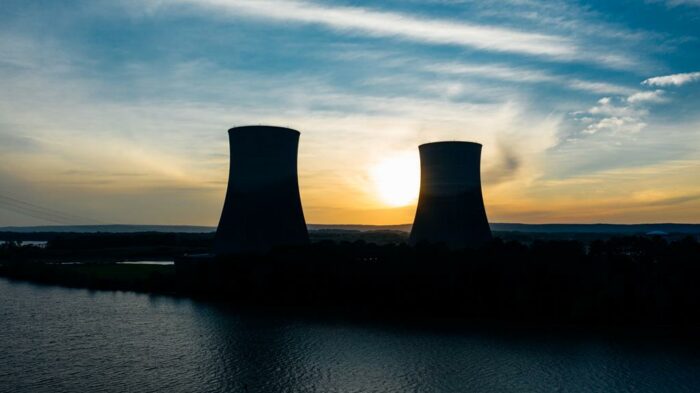Proving Poison: Establishing Toxic Exposure at Camp Lejeune
This article examines the historical context, nature, and impact of toxic exposure at Camp Lejeune. Additionally, it explores the legal implications surrounding this case and measures adopted to prevent future incidents.

Through a detailed analysis of scientific findings and legislative actions, it seeks to establish an understanding about the complexity of proving poison in environmental settings within a military context.
Key Takeaways
- Camp Lejeune's water supply systems were contaminated with toxic chemicals from 1953 to 1987, resulting in prolonged exposure to volatile organic compounds (VOCs) for residents.
- Prolonged exposure to VOCs at Camp Lejeune led to various diseases, including cancer and neurological disorders, with significantly higher incidences among residents exposed to contaminated water.
- Establishing a causal relationship between toxic exposure and illnesses is challenging, requiring meticulous documentation and expert testimony for compensation claims.
- Preventive measures and regulatory standards have been implemented to prevent future incidents of toxic exposure and improve environmental safety in military installations.
The Historical Context of Camp Lejeune

Established in 1941, Camp Lejeune's history is integral to understanding the context of toxic exposure incidents that occurred within its boundaries. The military infrastructure was developed during the Second World War to train American forces for combat. It quickly became the largest amphibious base on the East Coast, with an area covering approximately 246 square miles and housing over 170,000 personnel.
The Lejeune legacy is a complex one. While it is renowned for shaping generations of marines and naval personnel and playing a considerable role in global conflict management, it also has a darker side related to environmental contamination. During the period between 1953 and 1987, volatile organic compounds were detected in two water supply systems serving Camp Lejeune. Contaminants included industrial solvents such as trichloroethylene (TCE), perchloroethylene (PCE), vinyl chloride, and benzene among others deemed harmful by regulatory bodies.
These hazardous substances seeped into groundwater from multiple sources including leaking storage tanks and indiscriminate disposal practices part of military operations at that time. The affected areas comprised housing communities where service members lived with their families exposing thousands of individuals to dangerous levels of pollutants over several decades.
Understanding the Nature of Toxic Exposure

Understanding the complexities of harmful contact with hazardous substances plays a key role in the analysis of health implications at military installations. The study of toxicology basics is integral to this understanding, especially in cases such as Camp Lejeune where potential exposure to toxic chemicals may have occurred over an extended period.
Toxicology, essentially, is the science that identifies and quantifies the adverse effects of chemicals on living beings. It provides insight into how toxins interact with biological systems and helps identify exposure symptoms - often an essential step towards establishing evidence for actual harm caused by toxic substances. These symptoms can range from mild discomforts like headaches or skin rashes to severe conditions like cancer or neurological disorders.
In the context of Camp Lejeune, it becomes imperative not just to establish if there was harmful exposure but also to understand its extent and impact. This involves mapping out patterns of reported symptoms among inhabitants over time, linking them back to possible sources within the camp premises based on historical records and scientific studies.
Comprehending how these toxins could have entered human bodies (through ingestion, inhalation, or dermal absorption) and their probable movement within biological systems forms another essential element. For instance, volatile organic compounds (VOCs), which were reportedly present at Camp Lejeune, are known for their ability to easily evaporate into the air making inhalation a major route of exposure.
Thus, unraveling these layers through rigorous scientific inquiry would be fundamental in establishing any causal relationship between residing at Camp Lejeune and suffering from certain health ailments.
Analyzing the Impact of Toxic Exposure on Camp Lejeune Residents

Assessing the health ramifications on inhabitants of the military base requires meticulous examination of reported symptoms, their correlation with potential sources of harmful substances, and an understanding of how these elements could have interacted within human biological systems. The health consequences associated with toxic exposure at Camp Lejeune are multifaceted and complex.
Studies indicate that prolonged exposure to volatile organic compounds (VOCs) found in the water supply has resulted in a variety of diseases including several types of cancer, neurological disorders, and birth defects among children born on the base. Epidemiological research shows that incidences of these diseases were significantly higher among residents exposed to contaminated water compared to control groups.
The interaction between pollutants and different biological systems is complex. For instance, trichloroethylene (TCE), one of the main VOCs identified at Camp Lejeune, is known to interfere with the normal functioning of the liver leading to hepatocellular carcinoma. Other VOCs like perchloroethylene (PCE) can cross the blood-brain barrier causing neurotoxic effects.
Compensatory schemes have been implemented by federal agencies for affected residents. These schemes include healthcare benefits covering treatment costs for specific illnesses linked directly to toxic exposure at Camp Lejeune. However, establishing eligibility for these programs requires evidence-based demonstration that health conditions were indeed caused by toxic exposure - a challenging task due to latency periods for some diseases and difficulties in quantifying individual levels of exposure retrospectively.
Legal Implications of the Camp Lejeune Toxic Exposure Case

Legal ramifications of the contamination incident have centered on liability issues, the burden of proof required for affected residents to access compensatory schemes, and the role of governmental oversight in preventing such environmental health disasters. The legal consequences hinge on whether those responsible for the mismanagement and negligence leading up to this environmental catastrophe can be held accountable.
The challenge confronting victim compensation is twofold: firstly, providing convincing evidence linking specific medical conditions to toxic exposure at Camp Lejeune; secondly, pinpointing culpability due to neglect or failure in duty by relevant authorities. These complexities necessitate a comprehensive understanding of both environmental health science and tort law.
A point of contention lies in establishing causality between exposure to contaminated water and ensuing illness. While scientific research supports a correlation, translating this into legally persuasive arguments requires meticulous documentation and expert testimony. Consequently, it becomes a difficult task for victims seeking compensation.
On another note, questions surrounding government responsibility illuminate broader concerns about regulatory adequacy in safeguarding public health from environmental hazards. Regulatory standards during Camp Lejeune's operational period were arguably less stringent than present-day benchmarks. However, negligence could still be inferred if evidence shows deliberate disregard or concealment of information about water contamination risk levels.
Steps Taken to Address the Issue and Prevent Future Incidents

In the aftermath of this environmental disaster, a series of measures have been implemented to address the issue at hand and to prevent similar occurrences in the future. Among these are strict preventive measures and stringent exposure protocols that were absent during the Camp Lejeune incident.
Preventive measures primarily focus on enhancing existing infrastructure for water treatment facilities. They also entail regular monitoring of drinking water sources and implementing robust quality control mechanisms to ensure adherence to safety standards. Furthermore, a comprehensive system for hazardous waste management has been established, aiming at proper disposal and minimizing potential contamination risks.
Exposure protocols refer to the procedures put in place for situations where toxic exposure is suspected or confirmed. These protocols include immediate evacuation from polluted areas, medical screenings for affected individuals, and provision of necessary healthcare services. In addition, steps have been taken toward establishing clear communication channels regarding potential hazards among military personnel and their families residing on bases.
Additionally, there is now stricter regulation around chemicals used within military installations; many previously used substances have been banned due to their proven links with adverse health effects. There is also an increased emphasis on training military personnel about potential environmental hazards and how they can protect themselves from harm.
Finally, policy reforms have led to an overhaul in accountability measures concerning environmental issues within the defense sector. This includes setting up independent oversight bodies responsible for conducting audits and ensuring compliance with all relevant regulations.
Through these rigorous preventive measures and strict exposure protocols, efforts are being made to mitigate any potential damage from future incidents similar to what transpired at Camp Lejeune.
Frequently Asked Questions
What Specific Toxins Were Found in the Water Supply at Camp Lejeune?
In the water supply at Camp Lejeune, specific toxins detected included volatile organic compounds such as trichloroethylene and tetrachloroethylene. These findings necessitated extensive treatment options to ensure a safe and potable water supply.
How Did the Toxic Contamination at Camp Lejeune Come to Light?
The toxic contamination at Camp Lejeune was unveiled largely due to the role of whistleblowers, who exposed alleged cover-ups, thereby initiating investigations into the water supply's hazardous chemical components.
What Are the Specific Health Issues Linked to the Toxic Exposure at Camp Lejeune?
Specific health issues linked to toxic exposure at Camp Lejeune include various cancers, leukemia, infertility, and neurobehavioral effects. These have led to numerous compensation claims asserting legal rights of affected individuals.
Were There Any Other Military Bases Affected by Similar Toxic Exposures?
In a global impact analysis, several military bases have experienced similar toxic exposures, necessitating a reevaluation of military health policies to prevent further incidents and address the resultant health concerns.
What Are the Current Health and Safety Measures in Place at Camp Lejeune to Prevent Such Incidents in the Future?
The Lejeune Legislation Impact has prompted prevention strategies implementation at Camp Lejeune, including stringent water testing protocols, improved waste disposal systems, and rigorous environmental health surveillance to mitigate future toxic exposure incidents.
Conclusion
The toxic exposure at Camp Lejeune remains a significant concern. The historical context, nature of exposure, and its impact on residents have been analyzed in depth.
Legal implications surrounding this case have highlighted the need for stricter regulations and oversight.
Efforts to address this issue are ongoing, with an emphasis on preventing future incidents through increased transparency and improved environmental standards.




